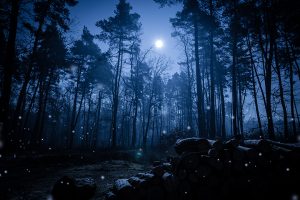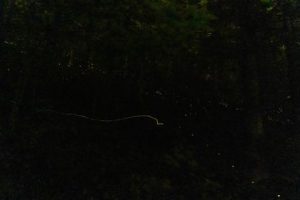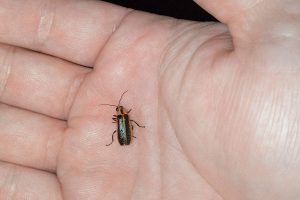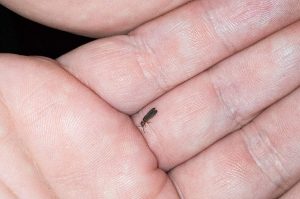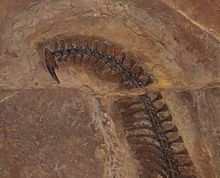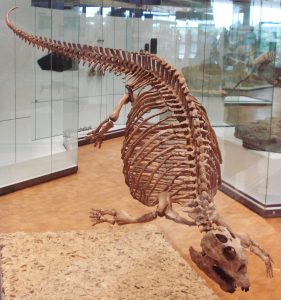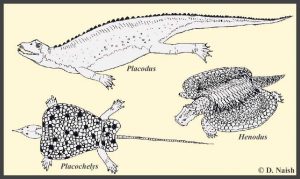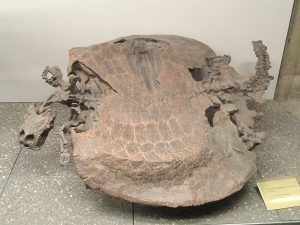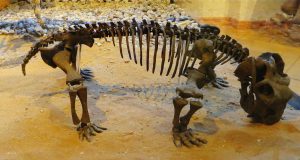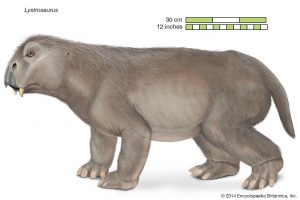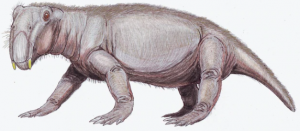Podcast: Play in new window | Download (Duration: 19:24 — 20.4MB)
Let’s learn about some strange dog breeds (including a mystery dog!) and what may be the cutest frog ever. Thanks to Brad and Dan for their suggestions this week, and a special thanks to Richard from NC for suggesting the Carolina dog at just the right time.
Check out Dan’s podcast, “Sure, Jan!”
Further viewing:
World’s Cutest Frog – Desert Rain Frog
A talbot dog from the olden days:
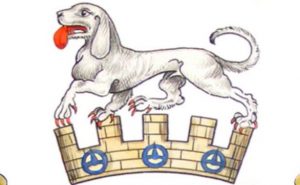
The Xoloitzcuintli dog:
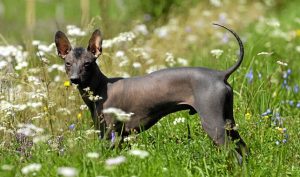
Norwegian lundehund hard at work:

The Norwegian lundehund has lots of toes:
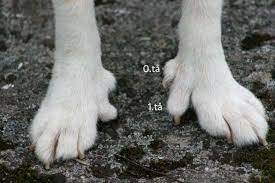
DOUBLE NOSE DOGGO (Pachón Navarro):

ANOTHER DOUBLE NOSE DOGGO (Tarsus Catalburun):

The Carolina dog:

The desert rain frog, round boi:
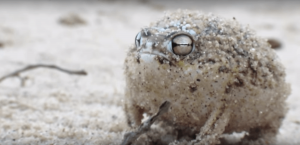
Show transcript:
Welcome to Strange Animals Podcast. I’m your host, Kate Shaw.
A few weeks ago I got to meet two listeners, Brad and Dan. We met for coffee and had a great time talking about animals and podcasting and lots of other things. Dan is a podcaster too, cohost of a great show called “Sure, Jan!” which discusses musical theater in detail with a lot of insight and humor. There’s some language not appropriate for kids, but honestly, any kid who’s so into musical theater that they’re listening to a three-part deep dive into “Everybody’s Talking About Jamie,” they can handle a few bad words. There’s a link in the show notes if you want to check it out.
Brad and Dan both gave me topic suggestions, so this is their episode!
We’ll start with Brad’s suggestion about strange dog breeds. We actually covered this topic a few years ago in a Patreon episode, so Patreon subscribers may recognize a lot of this information, but I’ve done some additional research and added to it.
There are a lot more dog breeds out there than most people know, many of them very rare and restricted to particular regions of the world. Often they were bred for specific purposes, sometimes purposes that no longer exist. This is the case for the turnspit dog. It was a short-legged dog that was bred to run on what was called a dog wheel. The dog wheel looked like a big hamster wheel and turned the spit, a metal rod suspended over the fire that a big piece of meat was stuck onto. The dog ran in the wheel, which turned it, which turned the cord attached to the spit, which turned the spit, which meant the meat cooked evenly instead of staying raw on one side and burning on the other. Usually a household had two turnspit dogs so one could rest while the other took a turn running in the wheel. Once better technology was invented to cook meat, the turnspit dogs were out of a job and eventually stopped being bred. They’re now an extinct breed.
Another extinct dog breed is the Talbot hound. It was a large, relatively slow and heavy hound with white or pale-colored fur, popular in Europe for hundreds of years as a hunting dog. It appears on many coats of arms. It was less of a breed than a type of dog, with many large hounds being referred to as talbots as far back as the 15th century and Talbot being a common name for a hound in the 14th century and possibly earlier. By the 17th century it was more of a standardized breed, resembling a white or light-colored bloodhound in appearance with a tail that curled upward. But by the 19th century it had gone extinct. It might have been the ancestor of the modern beagle.
Many dog breeds aren’t all that old, only dating back to roughly the early 19th century. In the Victorian era in Britain, people got really interested in recreating dog breeds from antiquity, so some breeds that people think date back to antiquity were actually developed just a few hundred years ago. But there are some breeds that genuinely have been around and more or less unchanged for a really long time.
The Xoloitzcuintli (sho-lo-eets-quint-lee) or Xolo is a rare breed of dog that was originally bred by the Aztecs and dates back more than 3,500 years. It’s a hairless dog, although many actually do have a full coat. The hairless variety has black or gray-blue skin that is susceptible to sunburn, while the coated variety has short, dense hair. Because hairlessness is genetically related to a condition where not all the teeth form, hairless Xolos usually have fewer teeth than coated Xolos. Hairless dogs need sunscreen and skin care to keep their skin healthy just like people do.
Another old dog breed is the Norwegian Lundehund. It’s a small, active dog bred specifically for hunting puffins. The breed nearly went extinct after a dog tax made it hard for people to afford keeping numerous dogs, and instead they started using nets to hunt puffins. After the puffin was declared a protected species, even the people who still kept lundehunds for hunting stopped breeding them.
By 1963 there were only six purebred lundehunds alive, five of them related to each other. As a result, despite careful breeding guidelines, modern lundehunds are extremely inbred and prone to genetic diseases. Currently a group of breeders and geneticists are working on crossbreeding the Lundehund with other Nordic breeds to retain the lundehund’s unique traits but make it healthier.
The lundehund definitely has unique traits. It has six toes on each foot, has incredibly flexible leg and neck joints, and can fold its ears shut to keep out water and dirt. All these traits helped it climb nearly vertical cliffs and caves where puffins nested. It also has a double coat to help keep it warm in cold weather. But there is good news for the lundehund: it has a job again! In 2013 the dogs started being used to find bird nests around Norwegian airports. Airports need to keep birds away from the flight paths of planes, since if they hit the plane’s windshield or get sucked into the engine’s air intake, they can cause a plane to crash. The lundehunds hunt down bird nests on the airport grounds so they can be removed before there’s a terrible accident.
While I was working on this episode, Richard from NC, who had no idea that I was researching weird dog breeds, asked if I’d heard about the Carolina dog, also known as the American dingo. I looked it up and it’s a real animal—specifically, a dog breed. But it has a strange history.
The Carolina dog is medium-sized, up to 20 inches tall at the shoulder, or 51 cm, but lightly built. Its short hair is often yellow, ginger, or pale brown in color, sometimes with white markings. It has long, slender, erect ears and a long tail. White settlers sometimes called it the Indian dog because Native Americans kept it as a pet or hunting dog, but there were also plenty of feral Carolina dogs living in the wild in the eastern United States.
Archaeological excavations done in the late 19th century found lots of dog remains buried with people. Several archaeologists noted that the dog’s jaw was slightly different from other dog breeds, lacking one pair of teeth. They suggested that the so-called Indian dogs were descended from the earliest domesticated dogs in Asia and migrated into North America when humans did in the Pleistocene.
This was the accepted theory until 2013, when genetic testing was finally done on the breed. Later genetic studies have also been carried out. The studies all conclude that although the Carolina dog has interbred with modern dog breeds, it does have genetic markers that indicate some of its ancestors are from East Asia. It’s more complicated than it sounds, though. A 2018 genetic study compared fossils from ancient North American dogs with the living Carolina dogs and didn’t find much of a match. The fossil dogs migrated from Siberia and were isolated in North America for 9,000 years. Then their unique genetic signature vanished, with the exception of some Arctic dog breeds, as Eurasian dogs brought to North America from Europe took over. Some Carolina dogs do contain that unique genetic signature, but there’s no way to tell if it’s from ancient ancestors or more recent cross-breeding with Arctic breeds.
What is definitely true is that the Carolina dog shares a lot of physical traits with other feral dog populations from around the world. Basically, if dogs are allowed to live and breed without human help or interference, the result is a dog that looks a lot like the Carolina dog of North America, or the pariah dog of Asia, or the dingo of Australia.
But let’s talk now about dogs with double noses, such as the Pachón Navarro, a Spanish hunting dog that sometimes has a double nose, also called a split nose. That doesn’t mean it has two snouts or four nostrils, but that each nostril has its own nose pad separated by a strip of skin and fur, with a groove running down the middle of the snout.
The Pachón Navarro almost went extinct as a breed. A breeding program got underway in the 1970s but it’s still a rare breed. It’s a pointer hound bred since at least the 15th century in the Pyrenees Mountains, and it has short hair that’s white with brown or orange markings, especially on the ears and over the eyes. Not all dogs of this breed have the double nose, and some modern breeders try not to breed for it since the double nose trait is linked to a cleft palate that can cause other health issues.
The double-nosed trait is only seen in one other dog population. The Tarsus Catalburun [chatal-burrun], or Turkish pointer, may be a descendant of Spanish dogs favored by Turkish nobility, or it may be the dog that gave rise to the Pachón Navarro breed. Most historians think the breed was probably developed in the 19th century from European dogs since there has never been a tradition of hunting with pointers in the area. It’s really rare outside of Turkey and rare inside of Turkey, with a population of only a few hundred dogs that are somewhat inbred. They’re mostly kept by partridge hunters.
There is a mystery associated with double-nosed dogs. The Andean tiger hound is a third variety of double-nosed dog that’s supposed to live in Bolivia, South America. It’s supposedly descended from dogs brought to the Americas by Spanish Conquistadors in the 16th century.
But does the Andean tiger hound really even exist? In 1913, explorer Lt.-Col Percy Fawcett reported seeing double-nosed dogs in the Amazon jungle. In a book Fawcett’s son compiled from his field notes and published in 1953, he reports,
“Here we saw for the first and only time a breed of dog known as the double-nosed Andean tiger hound. The two noses are as cleanly divided as though cut with a knife. About the size of a pointer, it is highly valued for its acute sense of smell and ingenuity in hunting jaguars. It is found only on these plains.”
But no one else who visited Bolivia ever reported seeing any of these dogs—until 2005 when another explorer, Colonel John Blashford-Snell, saw a double-nosed dog in a remote village. The dog was named Bella and her owner reported that she was a member of an extremely rare breed found only in Bolivia.
The following year Blashford-Snell returned to the village. Unfortunately Bella had died in the meantime, but she had had a puppy, named Xingu, who also had a double nose. While Blashford-Snell was in the area with a team of scientists investigating a 30,000 year old meteor crater, Xingu had a litter of puppies with a single-nosed dog and two of the four puppies had double noses.
It’s possible that the Andean tiger hound is a rare dog breed still hanging on in remote areas of Bolivia, a descendant of Spanish dogs. Then again, it might just be a trait that crops up occasionally in the local dogs, either due to Spanish double-nosed dogs in the ancestry or a similar genetic anomaly that developed independently. The trait occurs in other breeds occasionally, especially in wolfhounds and bullmastiffs.
All the dogs we’ve talked about are good. They’re good dogs, Brad.
Next, Dan wanted to hear about the desert rain frog. I know we’ve talked about it before at some point, but only briefly and I can’t even find which episode. So all this information is new to me too.
The desert rain frog only grows about two and a half inches long, or 6 cm. It’s not your average hopping frog that sits on a lily pad and goes ribbit and maybe plays a tiny banjo. Instead, it’s a round boi with short little thin legs that it uses to dig burrows in the sand where it lives. Which is a desert. It’s a rain frog that lives in a desert. Also, it makes this sound:
[desert rain frog sound]
The desert in question is a 6-mile-wide strip of land, or 10 km, along the southwestern coast of Africa, right at the border of Namibia and South Africa. Yes, it’s a desert along the ocean. It’s actually a specific habitat called a coastal desert. The frog lives in a small part of the Namib coastal desert, which is probably the world’s oldest desert—possibly as much as 80 million years old. Parts of it have stupendously huge sand dunes, up to 980 feet tall, or 300 meters, and 20 miles long, or 32 km.
Because it’s an amphibian, the desert rain frog has to keep its skin moist. This can be difficult to do in a desert. It digs its burrow deep enough to find moist sand to rest on, and it absorbs the moisture through its skin. Coastal deserts also receive some moisture in the form of sea fog. This helps plants to grow on the dunes, which means animals like antelopes come to eat the plants, which is important because their dung attracts the insects the frogs eat.
The female desert rain frog lays her eggs in her burrow on damp sand. The eggs hatch into tiny froglets instead of tadpoles.
The frog’s legs are too short to allow it to hop, but it has webbed toes that help it walk on loose sand. It’s nocturnal and spends the day in its burrow, but at night it comes out to walk around and catch insects. It will also emerge during the day when there’s a lot of fog. It mostly eats beetles and moths that are attracted to animal dung and it probably also eats the eggs those insects lay in the dung and the larvae that hatch out of the eggs. Because its skin is moist, sand sticks to it and helps camouflage the frog while it’s aboveground.
I need to stress how round this frog is, because I don’t think I have made it clear. It’s very round, generally described as spherical. It’s a little bigger than a ping-pong ball but it resembles a ping-pong ball that’s stuck all over with sand and has round golden eyes and a frowny little mouth and absurdly short legs. It may actually be the cutest frog, and that is a ferociously competitive title.
Unfortunately, because the desert rain frog lives in such a small, specific habitat, it’s endangered due to habitat loss and pollution. Strip mining for diamonds is common in the area and people have also started building roads and grazing livestock along parts of the coastal desert. Hopefully the desert rain frog and its habitat can be protected before it’s too late.
Let’s listen to this little frog again. This is the sound a desert rain frog makes when it feels threatened, actually. There’s a link in the show notes to the iconic video taken by wildlife photographer Dean Boshoff, which is where I got the audio, and when you watch it you can see that the frog is actually backing away. It’s okay, little frog. Everyone loves you.
[frog buzzy sound]
You can find Strange Animals Podcast at strangeanimalspodcast.blubrry.net. That’s blueberry without any E’s. If you have questions, comments, or suggestions for future episodes, email us at strangeanimalspodcast@gmail.com. If you like the podcast and want to help us out, leave us a rating and review on Apple Podcasts or Podchaser, or just tell a friend. We also have a Patreon at patreon.com/strangeanimalspodcast if you’d like to support us that way, and don’t forget to join our mailing list. There’s a link in the show notes.
Thanks for listening!
